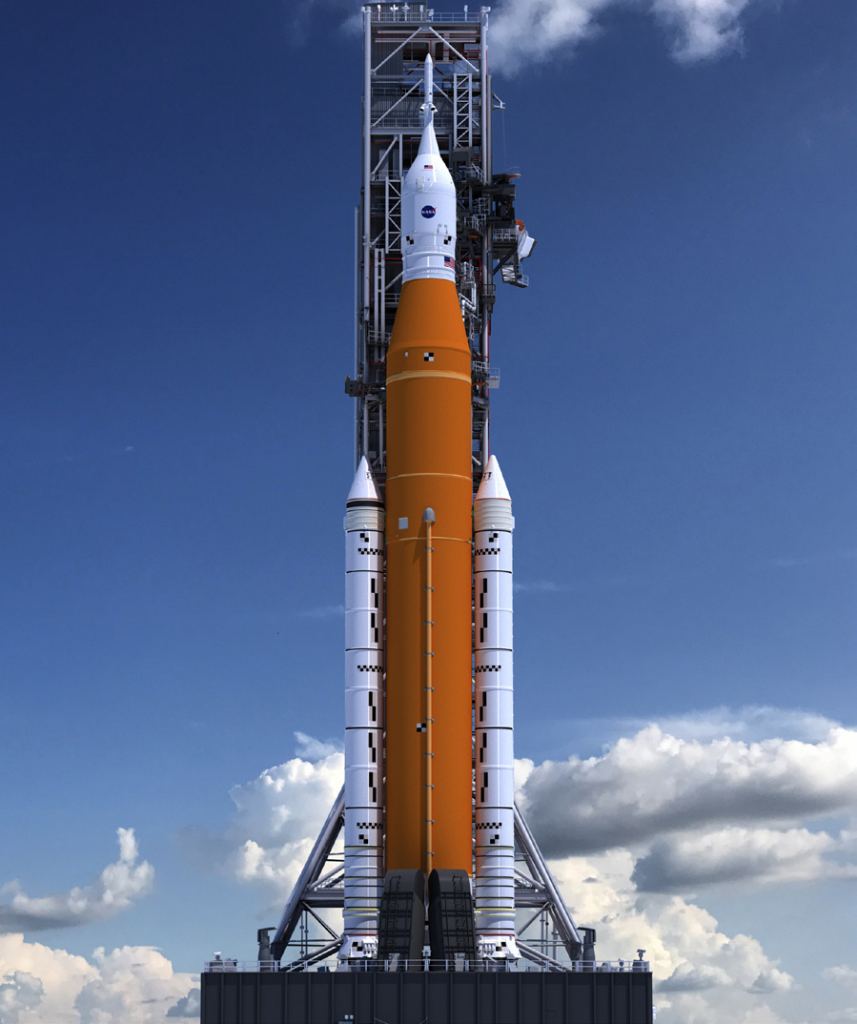

"This time we're going to learn how to live in that hostile environment for long periods of time, all with the purpose that we're going to Mars. "This time we're going not just to touchdown and leave after a few hours or a few days - we're going back to learn, to live, to work, to explore, to determine is there water therefore on the south pole that would mean we have rocket fuel, we have a gas station up there," Nelson said. Speaking to BBC Radio 4 before the second launch attempt, NASA Administrator Bill Nelson said that the test mission will be a spur for technological innovation and a crucial next step in humanity's exploration of the cosmos.

Artemis 2 will make the same journey as Artemis 1, but with a four-person human crew, and Artemis 3 will send the first woman and the first person of color to land on the moon's south pole. The flight will be followed by Artemis 2 and Artemis 3 in 20/2026 respectively. This will put the capsule's ablative heat shield to the test, which, alongside the craft's parachute, will use air friction to slow Orion down to just 20 mph (32.2 km/h), after which it should plop down safely in the Pacific Ocean off the coast of Baja California, Mexico, ready for retrieval. 16, 2022 Mission duration: 25 days, 10 hours, 53 minutes Total distance traveled: 1.4 miIlion miles Re-entry speed: 24,581 mph (Mach 32) Splashdown: Dec. When Orion comes back, it is set to return hotter and faster than any space vehicle ever has, heating up to 5,000 degrees Fahrenheit (2,800 degrees Celsius) as it enters Earth's atmosphere at 32 times the speed of sound. Learn more Mission Facts: Launch date: Nov. NASA's new moon rocket spotted from space rolling to the launch pad (photos) NASA astronaut Mark Vande Hei back on Earth after record-breaking mission 29 launch opportunity would open at 8:33 a.m. Following technical issues before the scheduled maiden voyage of the Artemis mission on Monday, NASA is aiming for a launch on Saturday, Sept. 5 strange, cool things we've recently learned about the moon Mike Wall is the author of " Out There " (Grand Central Publishing, 2018 illustrated by Karl Tate), a book about the search for alien life. If Artemis 1 can't fly on that day, NASA has backup dates of Nov. (Different launch dates lead to different mission durations, thanks to orbital dynamics.) Mother Nature should cooperate there's a 90% chance of good weather on Wednesday. Artemis 3 will put boots on the ground near the lunar south pole in 2025 or 2026.Īrtemis 1 will last about 26 days if it launches on Wednesday. If all goes according to plan with Artemis 1, Artemis 2 will launch in 2024, sending astronauts on a trip around the moon. It will also be the first mission in NASA's Artemis program of lunar exploration, which aims to establish a crewed outpost near the moon's south pole by the end of the 2020s. NASA's Artemis 1 moon rocket boosters could expire in December, launch or notĪrtemis 1 will be the first-ever flight for SLS and the second for Orion, which launched to Earth orbit atop a United Launch Alliance Delta IV Heavy rocket in 2014. Artemis 1 cubesats: The 10 tiny satellites hitching a NASA ride to the moon NASA delays Artemis 1 moon launch to Nov. If the team determines that the caulking needs to be replaced, a rollback to KSC's Vehicle Assembly Building would likely be required. The RTV issue is not fixable at the launch pad, because Orion sits so high atop the SLS. "This is just an additional layer on there to create a kind of a seamless airstream flow." "We do have protections in place as it pertains to the materials that underlie that RTV," he said. The Artemis 1 team isn't terribly concerned about increased "aeroheating" around Orion due to the loss of some RTV, he added. "We need to just spend a little more time to review our flight rationale headed into this launch attempt, specifically as it pertains to liberation of any remaining RTV and debris transport," Sarafin said. The team is still examining the nature and severity of this risk.

Artemis 1 launch time free#
It's possible that some of the storm-torn RTV could shake free during liftoff, creating a debris hazard for the SLS, Sarafin said.
Artemis 1 launch time update#
(The Artemis 1 stack endured the wrath of Nicole, which weakened to a tropical storm shortly after landfall, out in the open on KSC's Pad 39B.) Update for 2 am ET: NASA successfully launched the Artemis 1 moon mission on the first Space Launch System rocket at 1:47 am EST (0647 GMT) in a stunning success. 10) when it slammed into Florida's Space Coast, mission team members said. Hurricane Nicole tore some of that caulking loose on Thursday (Nov. The RTV helps smooth out a small indentation in the capsule that could potentially cause some unwanted circulation and heating of air during flight, Sarafin said. One focus of that work will be a thin strip of caulking called RTV that encircles Orion. You can launch a Space Launch System of your own with this Estes NASA SLS model rocket for a 1:200 scale version of NASA's moon megarocket.


 0 kommentar(er)
0 kommentar(er)
